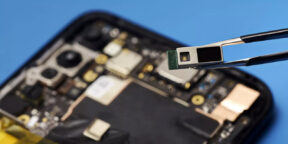It can only be used indoors and in line of sight. And this makes it a much more secure solution for offices.

The Institute of Electrical and Electronics Engineers (IEEE) has added 802.11bb as a light-based wireless communication standard. It supports connection speeds up to 224 GB/s.
Li-Fi transmits data not using radio frequencies, but due to infrared radiation, through a special transmitter and receiver. Remote controls work the same way.
The benefits of using light instead of radio frequencies are not only faster connections, but also “unprecedented security compared to conventional technologies such as Wi-Fi and 5G.”
Since light only travels within line-of-sight, it greatly enhances the privacy of the connection by preventing penetration through walls, reducing the risk of interference and eavesdropping, and allowing navigation inside buildings with centimeter accuracy.
True, Li-Fi only works indoors, so such a standard, of course, will not supplant Wi-Fi and 5G (and wired networks). Radio waves still have a distinct advantage in transmission over long distances over the air and through opaque objects. Li-Fi will be introduced only where it is possible and justified.
Now that IEEE 802.11bb has been adopted, manufacturers can have more confidence in the ecosystem and start integrating the technology where possible. The first commercial Li-Fi networking devices may be on display at upcoming electronics shows.



